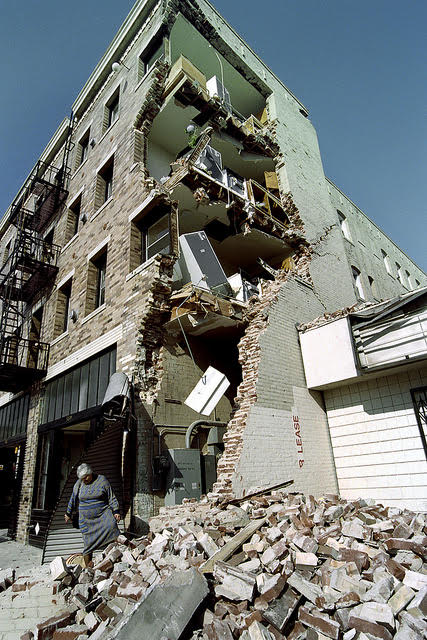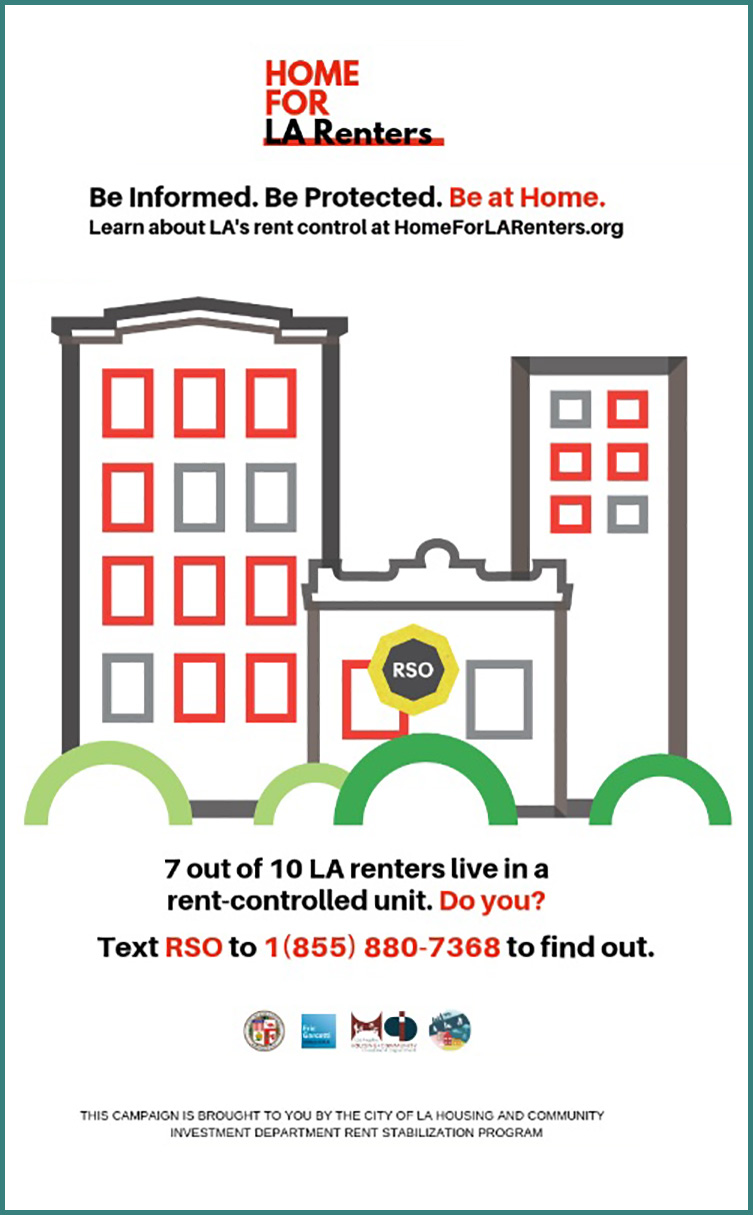Overview
 With a population of nearly 4 million people, and covering approximately 500 square
miles, the City of Los Angeles is vulnerable to a number of hazards which can develop into major disasters,
including storms and flooding, high winds, extreme heat and fires, earthquakes, terrorist acts and cyber attacks,
and more.
With a population of nearly 4 million people, and covering approximately 500 square
miles, the City of Los Angeles is vulnerable to a number of hazards which can develop into major disasters,
including storms and flooding, high winds, extreme heat and fires, earthquakes, terrorist acts and cyber attacks,
and more.
The Disaster Preparedness and Recovery Planning (DPRP) Unit works with the City’s
Emergency Management Department (EMD) and other city departments to update citywide emergency plans and practice
response actions to disaster events. DPRP also ensures the Los Angeles Housing Department (LAHD) has a Department
Emergency and Continuity of Operations Plan (DECOOP) highlighting its path to resume and continue services after a
disaster or other major disruption, including a pandemic, such as COVID-19.
Preparedness
DPRP disseminates preparedness information to LAHD employees, including plans, training opportunities, and information on weather and other potential disaster events. LAHD participates in citywide emergency exercises and drills to align its emergency efforts and procedures with other city departments. LAHD also uses newsletters and social media to inform the public and reminds all that:
- An important part of being prepared is having supplies, food, and water available when you need them most. This includes ready-to-eat canned or packaged food, bottled water, first aid kit, flashlights and extra batteries, phone charger, medication, a change of clothes, cash, copies of IDs and insurance documents, and other items important to you.
- Developing an emergency plan for you and your family is critical. Agree on ways you and your loved ones will communicate and try to reach each other during and after a disaster. Where will you meet up? Plan for everyone in your household, including persons with disabilities, elderly, children, and pets.
- You must practice, practice, practice. You may have to Drop, Cover, and Hold On during an earthquake, to prevent any falling items from hitting you. You may have to evacuate during a fire. The more you and your family practice for various types of emergencies, the less you will panic and the better prepared you will be during an actual emergency.
Plan ahead for disasters. Visit https://www.ready.gov/ (an official website of the U.S. Department of Homeland Security) for more information.
The City’s EMD also provides free and easy to use tools to help you and your family, business, and neighborhood prepare for disasters. Through their Ready Your LA Neighborhood (RYLAN) Program, you can develop a plan for how you and your neighbors will help each other during the first few hours immediately after a disaster. Visit https://ready.lacity.gov/ for more details.
Response
When a disaster hits, LAHD is ready to respond to the City’s Emergency Operations Center (EOC), along with other city departments and agencies, to help coordinate assistance to the city’s residents and its infrastructure.
DPRP coordinates communication and requests for LAHD assistance from the EOC, EMD, Los Angeles Department of Building and Safety (LADBS), the American Red Cross (ARC), the Department of Recreation and Parks (RAP), Los Angeles Fire Department (LAFD), and others. LAHD’s Code Enforcement Emergency Management Unit (EMU) handles safety assessments/inspections of multi-family properties which have experienced damages from events such as fire, rain and wind, fallen tree onto building, vehicle vs building accidents, and more.
By being prepared, you too can take action immediately following a disaster. The LAFD offers free Community Emergency Response Team (CERT) training. CERT is designed to help you protect yourself, your family, your neighbors and your neighborhood in an emergency situation. You can learn how to shut off your utilities, put out small fires, conduct cardiopulmonary resuscitation (CPR), control bleeding, provide basic medical aid, search for victims safely, and more. Visit https://www.cert-la.com/ to learn more.
Recovery
After experiencing a disaster such as a major earthquake or fire, recovery may take weeks, months, or even years.
LAHD primarily assists the city in its recovery efforts related to the identification, coordination and financing of housing solutions for persons impacted by the disaster. LAHD's disaster recovery capabilities to assist with financing repairs and reconstruction of damaged housing, assistance for residents to remain housed, and assistance to rehouse displaced residents are dependent on Federal, State, and/or Local post-disaster funding targeted and approved towards the implementation of those housing recovery efforts. If such funding is available, LAHD may be able to help in the following ways:
- Follow up on conducted safety assessments of multi-family residential properties to communicate with owners on status of property compliance/repairs.
- Provide information to tenants and landlords on rights and responsibilities, including fair housing issues.
- Coordinate/assist in the identification of temporary and permanent housing opportunities.
- Implement and manage Federal, State, and Local public programs to finance the repairs and reconstruction of residential properties and to assist residents to remain housed.
- LAHD employees are also ready to serve as Disaster Service Workers (DSWs), individually helping out in various other emergency roles, as needed by the City.
After major federally-declared disasters, the Federal Emergency Management Agency (FEMA) serves as the managing agency for federal disaster assistance to individuals. If you and your loved ones find yourselves in need of such assistance after a major disaster, please find more information at https://www.disasterassistance.gov/.
Mitigation
Hazard mitigation refers to the actions taken to lessen or eliminate the impacts disasters have on people and property.
While mitigation efforts can and should be taken before a disaster occurs, mitigation is also essential after a disaster. Often, post-disaster repairs and reconstruction are completed in such a way as to simply restore property to pre-disaster conditions, which may result in a repetitive cycle of damage, reconstruction, and repeated damage.
Hazard mitigation attempts to break the cycle by taking a long-term view of rebuilding and recovering following disasters. The implementation of mitigation actions leads to building stronger, safer and smarter communities that are better able to reduce future injuries and damage.
Starting in 2023, EMD kicked off its latest update of its Local Hazard Mitigation Plan (LHMP) to increase the resilience of LA communities. The LHMP identifies and assesses the hazards to which the City is most vulnerable and develops strategies that will be implemented over the next five-years to reduce disaster impacts. A Draft of the updated LHMP was made available for public comment from March 20 to April 15, 2024.
To learn more about the City’s LHMP and the planning process, including information on the public meetings held, please visit https://emergency.lacity.gov/Local-Hazard-Plan .
Along with other city departments, LAHD has participated in the City’s process to update its LHMP and considered and proposed mitigation actions and efforts which can assist in making our city more resilient.
Residents can also take actions to help mitigate hazards:
- Brush clearance around a property can help prevent damage and the spread of wildfires by clearing flammable vegetation and debris. For details on brush clearance and safety requirements for the City of LA, please visit https://lafd.org/fire-prevention/brush/brush-clearance-requirements.
- Earthquake shaking can move almost anything, even large or heavy items. You can reduce or prevent injury and damage by moving tall bookcases away from beds, sofas, or other places where people sit or sleep and moving heavy objects from higher shelves to lower shelves. Then, you can secure televisions, computers, bookcases, furniture, and unstrapped water heaters, so they won’t move during an earthquake. You can find more information and videos at https://www.earthquakecountry.org/step1/.
- Fire and earthquake insurance policies can be expensive, but necessary to avoid costly consequences of devastating disasters. Fire and earthquake policies are also available for renters. They can protect your belongings and cover the cost of living elsewhere if your rented house, apartment or room is damaged. Find out more from your insurance agent and ask about your coverage details to find out if you have enough coverage. Some information about renters earthquake insurance can be found here: https://www.earthquakeauthority.com/california-earthquake-insurance-policies/renters.
- Learn more about the benefits of retrofitting your home. For example, the California Earthquake Authority (CEA) offers several programs and incentives, such as the Brace and Bolt retrofit which strengthens homes that have a raised foundation by bolting and bracing the house to its foundation. Find out more about Brace and Bolt, Soft-story retrofits, and other preparedness and mitigation resources at https://www.earthquakeauthority.com/prepare-your-house-earthquake-risk/brace-and-bolt-grants.







